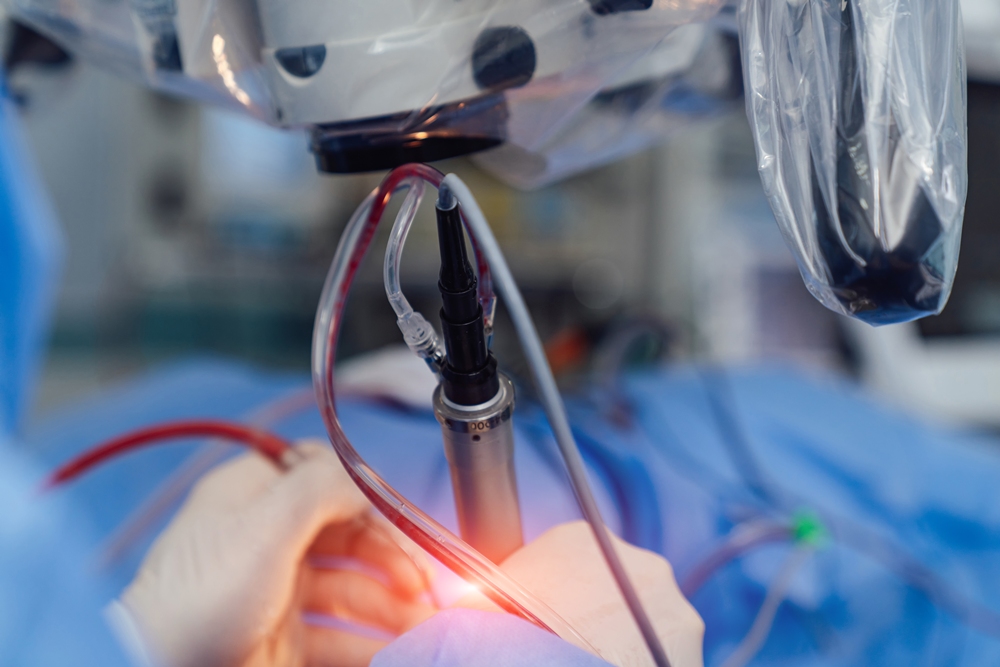
Doctors in Scotland and the US carried out a world-first robot stroke surgery, completing remote procedures on donated human bodies.
Prof Iris Grunwald at Ninewells Hospital in Dundee performed a remote thrombectomy – the removal of blood clots after a stroke – on a human cadaver donated to medical science located across the city at the University of Dundee.
Hours later, neurosurgeon Ricardo Hanel in Jacksonville, Florida, used the same technology to carry out the first transatlantic surgery on a human body in Dundee over 4,000 miles away.
The team said the technology could be a potential “game changer” if approved for patient use, as delays in accessing specialist treatment directly affect recovery chances.
“It felt as if we were witnessing the first glimpse of the future,” said Prof Grunwald from the University of Dundee.
“Where previously this was thought to be science fiction, we demonstrated that every step of the procedure can already be done.”
The University of Dundee serves as the global training centre of the World Federation for Interventional Stroke Treatment and is the UK’s only facility where doctors can operate on cadavers with human blood circulated in vessels to simulate live treatment.
“This was the first time that we could perform the whole mechanical thrombectomy procedure in a real human body to show that all steps of the procedure are possible,” Prof Grunwald explained.
The experiments, conducted last month, used human blood in four different cadavers. The bodies had been donated to science, with subjects dying within the past three years before being embalmed.
Both procedures employed robotics from Lithuanian firm Sentante.
While remote thrombectomies have been performed on silicon models, 3D printed replicas and animals, this is believed to be the first on a human body.
An ischaemic stroke occurs when a clot blocks an artery, cutting off blood and oxygen to the brain, causing brain cells to lose function and die.
The most effective treatment is thrombectomy, where specialists use catheters and wires to remove the clot.
However, access to specialists capable of performing this procedure remains limited.
Prof Grunwald explained that the experiment demonstrated how a robot could be connected to the same catheters and wires surgeons normally use.
A medic with the patient simply attaches the wires, then the surgeon, from another location, holds and moves their own wires.
The robot replicates these exact movements in real time on the patient.
The patient would be in a hospital operating room, while the doctor could perform the procedure using the Sentante machine from anywhere – even their home.
During the experiments, Prof Grunwald and Dr Hanel could see live X-rays and monitor progress in real time.
The Dundee expert noted it required only 20 minutes of training.
Tech giants Nvidia and Ericsson participated in the project to ensure robot connectivity.
“To operate from the US to Scotland with a 120 millisecond lag – a blink of an eye – is truly remarkable,” Dr Hanel said.
Prof Grunwald, vice president of the World Federation for Interventional Stroke Treatment and an Innovate UK award winner, identified two main problems with standard thrombectomy: a global shortage of qualified doctors and location-dependent treatment access.
Scotland has only three centres offering the procedure – Dundee, Glasgow and Edinburgh – requiring patients elsewhere to travel.
“The treatment is very time sensitive,” Prof Grunwald said.
“Every six minutes delay, you have a one per cent less chance of having a good outcome.”
“This technology would now provide a new way where you’re not depending on where you live – saving the valuable minutes where your brain is otherwise dying.”
Public Health Scotland reported 9,625 ischaemic strokes in Scotland last year. Only 212 patients – 2.2 per cent – received thrombectomy, while 1,045 received medication to dissolve clots.
Across the UK, only 3.9 per cent of stroke patients received thrombectomy in the year to March 2024.
Juliet Bouverie, chief executive of the Stroke Association charity, told BBC News the transatlantic procedure was “a remarkable innovation”.
“For too long, people living in remote and rural areas have been deprived of access to thrombectomy,” she added.
“Robotics like this could rebalance the inequity which exists in stroke treatment across the UK.”
The team hopes to participate in clinical trials next year.









